|
EMERGENCY POWER SYSTEM ORANGE COUNTY CA, BEST EMERGENCY POWER SYSTEM ORANGE COUNTY
CA, ORANGE COUNTY EMERGENCY POWER SYSTEM, ABOUT EMERGENCY POWER SYSTEM,
BEST ELECTRICIAN ORANGE COUNTY CA, Electricians orange county
california, Residental Electrician Orange County, Yelp Electrician
Orange County, Commercial
|
|
Residential
Commerical
Industrial
|
EMERGENCY POWER SYSTEM ORANGE COUNTY CA -
BEST EMERGENCY POWER SYSTEM ORANGE COUNTY CA
JS ELECTRICAL CONTRACTOR ORANGE COUNTY CA
|
|
| |
(714)
469-2110
CALL
US TODAY!
|
|
EMERGENCY POWER SYSTEM
|
|
| |
|
Electrician Orange County CA
- JS ELECTRIC -
Call Today
(714) 469-2110
VOTED BEST ELECTRICIANS IN ORANGE
COUNTY CA - Electricity Done Right!
Aliso Viejo, Irvine, Lake Forest, Rancho Santa Margarita, Laguna
Beach, Laguna Hills, Laguna Niguel, Trabucco Hills, Foothill
Ranch, Laguna Woods, San Juan Capistrano, Anahiem, Huntington
Beach, Newport Beach, San Clemente, Yorba Linda, Tustin, Buena
Park, Fountain Valley, Fullerton, Mission Viejo
"Invention is the most important product of man's creative
brain. The ultimate purpose is the complete mastery of mind
over the material world,
the harnessing of human nature to human needs." - Nikola
Tesla
|
|
|
| |
| . |
Electricians
Orange County
.com
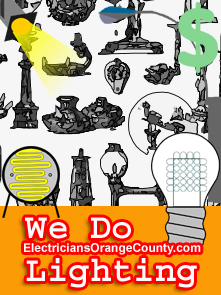
JS
Electric
We
are licensed 652382,
bonded, and insured
We accept Visa/Mastercard.
(714)
469-2110
CALL
US TODAY!
"Good
Power
Leads To Great Things!"
Greater
Living

(714)
469-2110
CALL
US TODAY!
VOTED
BEST
Electrician
In Orange County
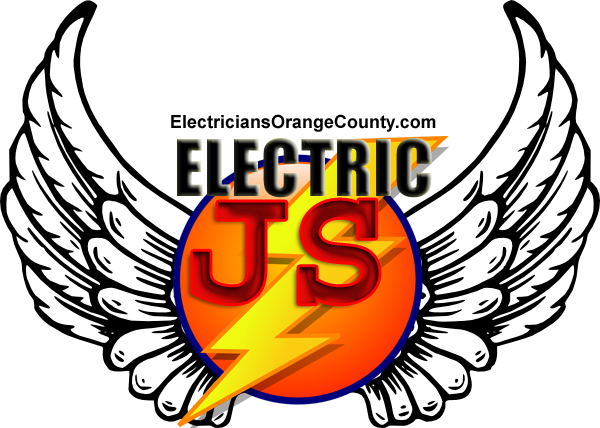
JS
Electric
We
are licensed 652382,
bonded, and insured
We accept Visa/Mastercard
(714)
469-2110
CALL
US TODAY!
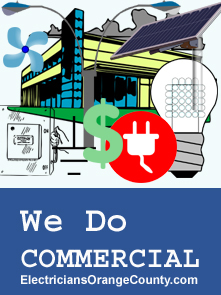
JS ELECTRIC
MISSION VIEJO
24112 Valyermo Drive
Mission Viejo, CA 92691
JS
ELECTRIC
SAN CLEMENTE
111 W. Avenida Palizada
San Clemente, CA 92672
JS
ELECTRIC
HUNTINGTON BEACH
19171 Magnolia Ave.
Huntington Beach, CA 92646
(714)
469-2110
CALL
US TODAY!
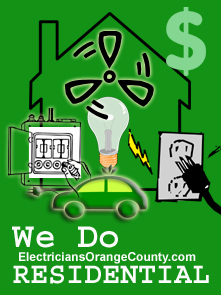
RECIPIE FOR LIFE
CALL
US TODAY
(714) 469-2110
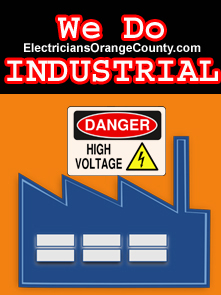
|
NOTE:
The
information and notices contained on this website
are intended as general research and information
and are expressly not intended, and should not
be regarded, as medical, financial or legal
advice. The articles are from free sources.
Our boutiques reserve the right to refuse service
to anyone. All of our lash artists have been
trained in eyelash extensions and conduct business
in a professional manner. A sales tax is included
in the amounts quoted/charged, some retail products
have not been taxed, you will pay this upon
purchase.
| |
|
MOST
PROFICIENT COMPANIES I HAVE SEEN!
JS Electric is one of the most responsive
and proficient electrician companies I
have seen. My experience with them has
is that they have demonstrated the knowledge
and experience to handle any electrical
issue for large, as well as smaller projects.
Plus, they are very responsive and provide
excellent customer service. I recommend
them highly.
|
|
|
|
|
. |
|
WE
DO: EMERGENCY
POWER SYSTEMS
|
|
|
JS
Electric - ElectriciansOrangeCounty.com
- has been specializing in EMERGENCY POWER SYSTEMS
of homes, commercial buildings, and industrial sites
for OVER 25 YEARS.
We're your premier electrical contractor because
we have exceptional service at fair market prices
and we answer the phone or
call you back within minutes. If you are
building new location, looking to purchase or maintain
an emergency power system, backup generators or have
an emergency power plan call us today!
WE
DO EMERGENCIES
 VERY
PROFESSIONAL "Jim
and his crew are very professional, thorough, and helpful.
I had all my old halogens and containers replaced by
newer cntainers and LED bulbs in kitchen and living
room (high ceiling). They did a great job. Later, I
had new recessed lights with LED bulbs / containers
installed in all bedrooms. Wonderful job, good rewiring
from attic, nice clean drywall patchup, and good cleanup.
Overall excellent service. Good people to work with."
Bindu VERY
PROFESSIONAL "Jim
and his crew are very professional, thorough, and helpful.
I had all my old halogens and containers replaced by
newer cntainers and LED bulbs in kitchen and living
room (high ceiling). They did a great job. Later, I
had new recessed lights with LED bulbs / containers
installed in all bedrooms. Wonderful job, good rewiring
from attic, nice clean drywall patchup, and good cleanup.
Overall excellent service. Good people to work with."
Bindu
 "CONSISTENTLY
EXCEEDED THEIR EXPECTATIONS! "Jim
Smith is a professional, reliable and quality electrician.
Though I have quite thankfully not had to use him yet,
many of my business associates have. He has consistently
exceeded their expectations and delivered quality results.
I highly recommend Jim to all of my business associates
and to you." - Virginia, Irvine CA "CONSISTENTLY
EXCEEDED THEIR EXPECTATIONS! "Jim
Smith is a professional, reliable and quality electrician.
Though I have quite thankfully not had to use him yet,
many of my business associates have. He has consistently
exceeded their expectations and delivered quality results.
I highly recommend Jim to all of my business associates
and to you." - Virginia, Irvine CA
WHAT
MAKES US DIFFERENT?
Quick
Response TIME - If something electrical has stopped
working, you need it fixed FAST. We make every effort
to give service calls priority.
Skilled
Electricians - We are highly skilled at listening
to the customer and diagnosing electrical problems.
We know how to do electricity right!
FREE
ESTIMATES - YES our estimates are FREE.
We
are the professionals to call! -
We fully licensed, bonded and insured.
We do:
Troubleshooting
& Repairs Breaker & Fuse Repairs 277 Volt Commercial
Lighting Repairs & Installations Indoor / Outdoor
Lamps & Ballast Repairs Exit & Emergency Power Outage
lighting Restaurant Equipment Hook-ups Time Clocks
& Photo Cells 220 & 240 Volt Dedicated circuits Copiers,
Faxes and Computer circuits New Panels & Transformers
Property Managers & HOA service Code Violations &
Repairs Motor Control Circuits
We
Additonally offer Energy Efficient Lighting that
runs cooler, lasts longer, and offers a very high
percentage less energy usage that traditional lighting.
Call
Today, for your Free Comprehensive Facility Energy
Audit.
CALL
TODAY (714) 469-2110
A
backup generator for a large apartment building

A
backup power fuel cell for telecom applications

A
portable emergency power generator in a shipping
container
An
emergency power system is an independent
source of electrical power that supports important
electrical systems on loss of normal power supply.
A standby power system may include a standby
generator, batteries and other apparatus. Emergency
power systems are installed to protect life and
property from the consequences of loss of primary
electric power supply.
They
find uses in a wide variety of settings from homes
to hospitals, scientific
laboratories, data centers,
telecommunication
equipment and ships. Emergency power systems can
rely on generators, deep
cycle batteries, flywheel
energy storage or hydrogen fuel
cells.
A
standby generator
is a back-up electrical system that operates automatically.
Within seconds of a utility outage an automatic
transfer switch senses the power loss, commands
the generator to start and then transfers the electrical
load to the generator. The standby generator begins
supplying power to the circuits. After utility power
returns, the automatic transfer switch transfers
the electrical load back to the utility and signals
the standby generator to shut off. It then returns
to standby mode where it awaits the next outage.
To ensure a proper response to an outage, a standby
generator runs weekly self-tests. Most units run
on diesel, natural gas or liquid propane gas.[3]
Automatic standby generator systems may be required
by building codes for critical safety systems such
as elevators in high-rise buildings, fire protection
systems, standby lighting, or medical and life support
equipment. Residential standby generators are increasingly
common, providing backup electrical power to HVAC
systems, security systems, and household appliances
such as refrigerators, stoves, and water heaters.
A
diesel generator
is the combination of a diesel engine with an electric
generator (often an alternator) to generate electrical
energy. This is a specific case of engine-generator.
A diesel compression-ignition engine often is designed
to run on fuel oil, but some types are adapted for
other liquid fuels or natural gas. Diesel generating
sets are used in places without connection to a
power grid, or as emergency power-supply if the
grid fails, as well as for more complex applications
such as peak-lopping, grid support and export to
the power grid. Sizing of diesel generators is critical
to avoid low-load or a shortage of power and is
complicated by modern electronics, specifically
non-linear loads. In size ranges around 50 MW and
above, an open cycle gas turbine is more efficient
at full load than an array of diesel engines, and
far more compact, with comparable capital costs;
but for regular part-loading, even at these power
levels, diesel arrays are sometimes preferred to
open cycle gas turbines, due to their superior efficiencies.
An
uninterruptible power supply, also uninterruptible
power source, UPS or battery/flywheel backup,
is an electrical apparatus that provides emergency
power to a load when the input power source, typically
mains power, fails. A UPS differs from an auxiliary
or emergency power system or standby generator in
that it will provide near-instantaneous protection
from input power interruptions, by supplying energy
stored in batteries, supercapacitors, or flywheels.
The on-battery runtime of most uninterruptible power
sources is relatively short (only a few minutes)
but sufficient to start a standby power source or
properly shut down the protected equipment. A UPS
is typically used to protect hardware such as computers,
data centers, telecommunication equipment or other
electrical equipment where an unexpected power disruption
could cause injuries, fatalities, serious business
disruption or data loss. UPS units range in size
from units designed to protect a single computer
without a video monitor (around 200 volt-ampere
rating) to large units powering entire data centers
or buildings. The world's largest UPS, the 46-megawatt
Battery Electric Storage System (BESS), in Fairbanks,
Alaska, powers the entire city and nearby rural
communities during outages.
A
deep-cycle battery is a lead-acid battery designed
to be regularly deeply discharged using most of
its capacity. In contrast, starter batteries (e.g.
most automotive batteries) are designed to deliver
short, high-current bursts for cranking the engine,
thus frequently discharging only a small part of
their capacity. While a deep-cycle battery can be
used as a starting battery, the lower "cranking
current" imply that an oversized battery may be
required. A deep-cycle battery is designed to discharge
between 45% and 75% of its capacity, depending on
the manufacturer and the construction of the battery.
Although these batteries can be cycled down to 20%
charge, the best lifespan vs cost method is to keep
the average cycle at about 45% discharge.[1] There
is an indirect correlation between the depth of
discharge of the battery, and the number of charge
and discharge cycles it can perform.
A
fuel cell is a device that converts the chemical
energy from a fuel into electricity through
a chemical reaction of positively charged hydrogen
ions with oxygen or another oxidizing agent.[1]
Fuel cells are different from batteries in that
they require a continuous source of fuel and oxygen
or air to sustain the chemical reaction, whereas
in a battery the chemicals present in the battery
react with each other to generate an electromotive
force (emf). Fuel cells can produce electricity
continuously for as long as these inputs are supplied.
The first fuel cells were invented in 1838. The
first commercial use of fuel cells came more than
a century later in NASA space programs to generate
power for satellites and space capsules. Since then,
fuel cells have been used in many other applications.
Fuel cells are used for primary and backup power
for commercial, industrial and residential buildings
and in remote or inaccessible areas. They are also
used to power fuel cell vehicles, including forklifts,
automobiles, buses, boats, motorcycles and submarines.
There are many types of fuel cells, but they all
consist of an anode, a cathode, and an electrolyte
that allows positively charged hydrogen ions (or
protons) to move between the two sides of the fuel
cell. The anode and cathode contain catalysts that
cause the fuel to undergo oxidation reactions that
generate positively charged hydrogen ions and electrons.
The hydrogen ions are drawn through the electrolyte
after the reaction. At the same time, electrons
are drawn from the anode to the cathode through
an external circuit, producing direct current electricity.
At the cathode, hydrogen ions, electrons, and oxygen
react to form water. As the main difference among
fuel cell types is the electrolyte, fuel cells are
classified by the type of electrolyte they use and
by the difference in startup time ranging from 1
second for proton exchange membrane fuel cells (PEM
fuel cells, or PEMFC) to 10 minutes for solid oxide
fuel cells (SOFC). Individual fuel cells produce
relatively small electrical potentials, about 0.7
volts, so cells are "stacked", or placed in series,
to create sufficient voltage to meet an application's
requirements.[2] In addition to electricity, fuel
cells produce water, heat and, depending on the
fuel source, very small amounts of nitrogen dioxide
and other emissions. The energy efficiency of a
fuel cell is generally between 40–60%, or up to
85% efficient in cogeneration if waste heat is captured
for use. The fuel cell market is growing, and Pike
Research has estimated that the stationary fuel
cell market will reach 50 GW by 2020
|
|
History
Emergency
power systems were used as early as World
War II on naval ships. In combat,
a ship may lose the function of its boilers,
which power the steam
turbines for the ship's
generator. In such a case, one or
more diesel
engines are used to drive back-up
generators. Early transfer
switches relied on manual operation;
two switches would be placed horizontally,
in line and the "on" position facing each
other. a rod is placed in between. In
order to operate the switch one source
must be turned off, the rod moved to the
other side and the other source turned
on.
Operation
in buildings
Mains
power can be lost due to downed lines,
malfunctions at a sub-station, inclement
weather, planned blackouts
or in extreme cases a grid-wide
failure. In modern buildings, most emergency
power systems have been and are still
based on generators.
Usually, these generators are Diesel engine
driven, although smaller buildings may
use a gasoline
engine driven generator and larger
ones a gas
turbine. However, lately, more use
is being made of deep
cycle batteries and other technologies
such as flywheel
energy storage or fuel
cells. These latter systems do not
produce polluting gases, thereby allowing
the placement to be done within the building.
Also, as a second advantage, they do not
require a separate shed to be built for
fuel storage.
With
regular generators, an automatic transfer
switch is used to connect emergency
power. One side is connected to both the
normal power feed and the emergency power
feed; and the other side is connected
to the load designated as emergency. If
no electricity comes in on the normal
side, the transfer switch uses a solenoid
to throw a triple pole, single throw switch.
This switches the feed from normal to
emergency power. The loss of normal power
also triggers a battery operated starter
system to start the generator, similar
to using a car battery to start an engine.
Once the transfer switch is switched and
the generator starts, the building's emergency
power comes back on (after going off when
normal power was lost.)
Unlike
emergency
lights, emergency lighting is not
a type of light fixture; it is a pattern
of the building's normal lights that provides
a path of lights to allow for safe exit,
or lights up service areas such as mechanical
rooms and electric rooms. Exit
signs, Fire
alarm systems (that are not on back
up batteries) and the electric motor pumps
for the fire
sprinklers are almost always on emergency
power. Other equipment on emergency power
may include smoke isolation dampers, smoke
evacuation fans, elevators, handicap doors
and outlets in service areas. Hospitals
use emergency power outlets to power life
support systems and monitoring equipment.
Some buildings may even use emergency
power as part of normal operations, such
as a theater using it to power show equipment
because "the
show must go on."
Operation
in aviation
Localizer,
glideslope,
and other instrument landing aids (such
as microwave transmitters) are both high
power consumers and mission-critical,
and cannot be reliably operated from a
battery supply, even for short periods.
Hence, when absolute reliability is required
(such as when Category 3 operations are
in force at the airport) it is usual to
run the system from a diesel
generator with automatic switchover
to the mains supply should the generator
fail. This avoids any interruption to
transmission while a generator is brought
up to operating speed.
This
is opposed to the typical view of emergency
power systems, where the backup generators
are seen as secondary to the mains electrical
supply.
Electronic
device protection
Computers,
communication networks, and other modern
electronic devices need not only power,
but also a steady flow of it to continue
to operate. If the source voltage drops
significantly or drops out completely,
these devices will fail, even if the power
loss is only for a fraction of a second.
Because of this, even a generator back-up
does not provide protection because of
the start-up time involved.
To
achieve more comprehensive loss protection,
extra equipment such as surge
protectors, inverters,
or sometimes a complete uninterruptible
power supply (UPS) is used. UPS systems
can be local (to one device or one power
outlet) or may extend building-wide. A
local UPS is a small box that fits under
a desk or a telecom rack and powers a
small number of devices. A building-wide
UPS may take any of several different
forms, depending on the application. It
directly feeds a system of outlets designated
as UPS feed and can power a large number
of devices.
Since
telephone
exchanges use DC, the building's battery
room is generally wired directly to
the consuming equipment and floats continuously
on the output of the rectifiers that normally
supply DC rectified from utility power.
When utility power fails, the battery
carries the load without needing to switch.
With this simple though somewhat expensive
system, some exchanges have never lost
power for a moment since the 1920s.
Structure
and operation in utility stations

Diagram
of a redundant power supply system.
In
recent years, large units of a utility
power station are usually designed on
a unit system basis in which the required
devices, including the boiler, the turbine
generator unit, and its power (step up)
and unit (auxiliary) transformer
are solidly connected as one unit. A less
common set-up consists of two units grouped
together with one common station auxiliary.
As each turbine generator unit has its
own attached unit auxiliary transformer,
it is connected to the circuit automatically.
For starting the unit, the auxiliaries
are supplied with power by another unit
(auxiliary) transformer or station auxiliary
transformer. The period of switching from
the first unit transformer to the next
unit is designed for automatic, instantaneous
operation in times when the emergency
power system needs to kick in. It is imperative
that the power to unit auxiliaries not
fail during a station shutdown (an occurrence
known as black-out
when all regular units temporarily fail).
Instead, during shutdowns the grid
is expected to remain operational. When
problems occur, it is usually due to reverse
power relays and frequency-operated relays
on grid lines due to severe grid disturbances.
Under these circumstances, the emergency
station supply must kick in to avoid damage
to any equipment and to prevent hazardous
situations such as the release of hydrogen
gas from generators to the local environment.
In
nuclear power plants
Emergency
power systems, called there Emergency
Diesel Generators (EDGs), are a required
feature in nuclear
power plants. They are typically installed
in sets of three. The EDG installation
is designed to the same safety-grade requirements
as the other safety systems in the plant.
The next (upcoming) generation of nuclear
power plants includes some designs with
multiple independent banks of EDGs (as
in the ABWRs
).
Controlling
the emergency power system
For
a 208 VAC emergency supply system, a central
battery system with automatic controls,
located in the power station building,
is used to avoid long electric supply
wires. This central battery system consists
of lead-acid
battery cell units to make up a 12
or 24 VDC system as well as stand-by cells,
each with its own battery charging unit.
Also needed are a voltage sensing unit
capable of receiving 208 VAC and an automatic
system that is able to signal to and activate
the emergency supply circuit in case of
failure of 208 VAC station supply.
See
also
Notes
References
External
links
| |
| ABOUT
ORANGE COUNTY CALIFORNIA |
Orange
County
is a county in Southern California, United States.
Its county seat is Santa Ana. According to the 2000
Census, its population was 2,846,289, making it
the second most populous county in the state of
California, and the fifth most populous in the United
States. The state of California estimates its population
as of 2007 to be 3,098,121 people, dropping its
rank to third, behind San Diego County. Thirty-four
incorporated cities are located in Orange County;
the newest is Aliso Viejo.
Unlike many other large centers of population in
the United States, Orange County uses its county
name as its source of identification whereas other
places in the country are identified by the large
city that is closest to them. This is because there
is no defined center to Orange County like there
is in other areas which have one distinct large
city. Five Orange County cities have populations
exceeding 170,000 while no cities in the county
have populations surpassing 360,000. Seven of these
cities are among the 200 largest cities in the United
States.
Orange County is also famous as a tourist destination,
as the county is home to such attractions as Disneyland
and Knott's Berry Farm, as well as sandy beaches
for swimming and surfing, yacht harbors for sailing
and pleasure boating, and extensive area devoted
to parks and open space for golf, tennis, hiking,
kayaking, cycling, skateboarding, and other outdoor
recreation. It is at the center of Southern California's
Tech Coast, with Irvine being the primary business
hub.
The average price of a home in Orange County is
$541,000. Orange County is the home of a vast number
of major industries and service organizations. As
an integral part of the second largest market in
America, this highly diversified region has become
a Mecca for talented individuals in virtually every
field imaginable. Indeed the colorful pageant of
human history continues to unfold here; for perhaps
in no other place on earth is there an environment
more conducive to innovative thinking, creativity
and growth than this exciting, sun bathed valley
stretching between the mountains and the sea in
Orange County.
Orange County was Created March 11 1889, from part
of Los Angeles County, and, according to tradition,
so named because of the flourishing orange culture.
Orange, however, was and is a commonplace name in
the United States, used originally in honor of the
Prince of Orange, son-in-law of King George II of
England.
|
|
Incorporated:
March 11, 1889
Legislative Districts:
* Congressional: 38th-40th, 42nd & 43
* California Senate: 31st-33rd, 35th & 37
* California Assembly: 58th, 64th, 67th, 69th,
72nd & 74
County Seat: Santa Ana
County Information:
Robert E. Thomas Hall of Administration
10 Civic Center Plaza, 3rd Floor, Santa Ana
92701
Telephone: (714)834-2345 Fax: (714)834-3098
County Government Website: http://www.oc.ca.gov |
CITIES
OF ORANGE COUNTY CALIFORNIA:
City
of Aliso Viejo,
92653, 92656, 92698
City of Anaheim,
92801, 92802, 92803, 92804, 92805, 92806, 92807,
92808, 92809, 92812, 92814, 92815, 92816, 92817,
92825, 92850, 92899
City of
Brea, 92821, 92822, 92823
City of
Buena Park, 90620, 90621, 90622, 90623,
90624
City
of Costa Mesa, 92626, 92627, 92628
City
of Cypress, 90630
City of
Dana Point, 92624, 92629
City
of Fountain Valley, 92708, 92728
City
of Fullerton, 92831, 92832, 92833, 92834,
92835, 92836, 92837, 92838
City
of Garden Grove, 92840, 92841, 92842, 92843,
92844, 92845, 92846
City
of Huntington Beach, 92605, 92615, 92646,
92647, 92648, 92649
City of
Irvine, 92602, 92603, 92604, 92606, 92612,
92614, 92616, 92618, 92619, 92620, 92623, 92650,
92697, 92709, 92710
City
of La Habra, 90631, 90632, 90633
City
of La Palma, 90623
City
of Laguna Beach, 92607, 92637, 92651, 92652,
92653, 92654, 92656, 92677, 92698
City
of Laguna Hills, 92637, 92653, 92654, 92656
City
of Laguna Niguel, 92607, 92677
|
City
of Laguna Woods,
92653, 92654
City
of Lake Forest, 92609, 92630, 92610
City
of Los Alamitos, 90720, 90721
City
of Mission Viejo, 92675, 92690, 92691, 92692,
92694
City
of Newport Beach, 92657, 92658, 92659, 92660,
92661, 92662, 92663
City
of Orange, 92856, 92857, 92859, 92861, 92862,
92863, 92864, 92865, 92866, 92867, 92868, 92869
City of
Placentia, 92870, 92871
City of
Rancho Santa Margarita, 92688, 92679
City of San
Clemente, 92672, 92673, 92674
City
of San Juan Capistrano, 92675, 92690, 92691,
92692, 92693, 92694
City
of Santa Ana, 92701, 92702, 92703, 92704,
92705, 92706, 92707, 92708, 92711, 92712, 92725,
92728, 92735, 92799
City
of Seal Beach, 90740
City
of Stanton, 90680
City of Tustin,
92780, 92781, 92782
City of
Villa Park, 92861, 92867
City
of Westminster, 92683, 92684, 92685
City
of Yorba Linda, 92885, 92886, 92887
|
Noteworthy
communities Some of the communities that exist within
city limits are listed below:
* Anaheim Hills, Anaheim * Balboa Island, Newport
Beach * Corona del Mar, Newport Beach * Crystal
Cove / Pelican Hill, Newport Beach * Capistrano
Beach, Dana Point * El Modena, Orange * French Park,
Santa Ana * Floral Park, Santa Ana * Foothill Ranch,
Lake Forest * Monarch Beach, Dana Point * Nellie
Gail, Laguna Hills * Northwood, Irvine * Woodbridge,
Irvine * Newport Coast, Newport Beach * Olive, Orange
* Portola Hills, Lake Forest * San Joaquin Hills,
Laguna Niguel * San Joaquin Hills, Newport Beach
* Santa Ana Heights, Newport Beach * Tustin Ranch,
Tustin * Talega, San Clemente * West Garden Grove,
Garden Grove * Yorba Hills, Yorba Linda * Mesa Verde,
Costa Mesa
Unincorporated communities These communities
are outside of the city limits in unincorporated
county territory: * Coto de Caza * El Modena
* Ladera Ranch * Las Flores * Midway City * Orange
Park Acres * Rossmoor * Silverado Canyon * Sunset
Beach * Surfside * Trabuco Canyon * Tustin Foothills
Adjacent counties to Orange County Are: *
Los Angeles County, California - north, west * San
Bernardino County, California - northeast * Riverside
County, California - east * San Diego County, California
- southeast
|
| |
"An
honest answer is the sign of true friendship."
We
receive many customers from across the world including
people from the following cities:
Aliso
Viejo 92656, 92698, Anaheim 92801, 92802, 92803, 92804,
92805, 92806, 92807, 92808, 92809, 92812, 92814, 92815,
92816, 92817, 92825, 92850, 92899, Atwood, 92811,
Brea, 92821, 92822,92823, Buena Park, 90620 ,90621,90622,
90624, Capistrano Beach, 92624, Corona del Mar, 92625,
Costa Mesa, 92626, 92627, 92628, Cypress, 90630, Dana
Point, 92629, East Irvine, 92650, El Toro, 92609,
Foothill Ranch, 92610, Fountain Valley, 92708, 92728,
Fullerton, 92831, 92832, 92833, 92834, 92835, 92836,
92837, 92838, Garden Grove, 92840, 92841, 92842, 92843
,92844, 92845, 92846, Huntington Beach , 92605, 92615,
92646, 92647, 92648, 92649, Irvine, 92602, 92603,
92604, 92606, 92612, 92614, 92616, 92617, 92618, 92619,
92620, 92623, 92697, La Habra, 90631, 90632, 90633,
La Palma, 90623, Ladera Ranch, 92694, Laguna Beach
, 92651, 92652, Laguna Hills ,92653, 92654,92607,92677,
Laguna Woods, 92637, Lake Forest, 92630, Los Alamitos,
90720, 90721, Midway City, 92655, Mission Viejo, 92690,
92691, 92692,Newport Beach , 92658, 92659, 92660,
92661, 92662, 92663, 92657,
Orange, 92856, 92857, 92859, 92862, 92863, 92864,
92865, 92866, 92867, 92868, 92869, Placentia, 92870,
92871, Rancho Santa Margarita 92688, San Clemente,
92672, 92673, 92674, San Juan Capistrano, 92675, 92693,
Santa Ana , 92701, 92702, 92703, 92704, 92705 ,92706,
92707, 92711, 92712, 92725.92735, 92799, Seal Beach
, 90740, Silverado 92676, Stanton, 90680, Sunset Beach
90742, Surfside 90743, Trabuco Canyon, 92678, 92679,Tustin
,92780, 92781,92782, Villa Park, 92861,Westminster,
92683, 92684, 92685, Yorba Linda, 92885, 92886, 92887
|
This
Business was Awarded
Best Electrician in Orange County CA
Orange County CA, Visit:
OrangeCountyCABusinessDirectory.com
ELECTRICIAN
ORANGE COUNTY CA
Call (714) 469-2110
Website:
ElectricianssOrangeCountyCA.com
http://www.electrician-orange-county-electrical-contractor-industrial.com
(c)
2016 Electricians Orange County CA, JS Electric,,
24112 Valyermo Drive , Mission Viejo, CA 92691
(c)
2016 Electricians Orange County CA, JS Electric,,
19171 Magnolia Ave. , Huntington Beach, CA 92646
(c)
2016 Electricians Orange County CA, JS Electric,,
111 W. Avenida Palizada, Suite 15A, San Clemente,
CA 92762
EMERGENCY
POWER SYSTEM ORANGE COUNTY CA, BEST EMERGENCY POWER
SYSTEM ORANGE COUNTY CA, ORANGE COUNTY EMERGENCY
POWER SYSTEM, ABOUT EMERGENCY POWER SYSTEM, BEST
ELECTRICIAN ORANGE COUNTY CA, UPS, Backup Generators,
Emergency Power, Electricians orange county california,
Residental Electrician Orange County, Yelp Electrician
Orange County, Commercial Electrician Orange County,
Electrical Contractor Orange County CA, Industrial
Electricial Orange County, FREE ESTIMATES, Commercial
Electric Wiring, electric lighting repair, industrial
electric Costa mesa, electric service orange county,
lighting wiring, Mission Viejo, Huntington Beach,
San Clemente, Anaheim, Irvine, Lake Forest, Orange,
Costa Mesa, Newport Beach, Laguna Beach, San Juan
Capistrano,electrician electrical repair installation
computer upgrade telephone Code Violations, HOA,
Exit Lighting, Solar, Photo Cells, Medical & Health
Care Facilities, Machine Shops,installers fans appliance
repair installers electricians, Electrical Wiring,
Bus Bars, Breaker Panel, Junction Box, Grounding,
Light Fixture, Solar Power, LED Lighting, Motors,
Electrical Equipment, Troubleshooting & Repairs
Breaker & Fuse Repairs 277 Volt Commercial Lighting
Repairs & Installations Indoor / Outdoor Lamps &
Ballast Repairs Exit & Emergency Power Outage lighting
Restaurant Equipment Hook-ups Time Clocks & Photo
Cells 220 & 240 Volt Dedicated circuits Copiers,
Faxes and Computer circuits New Panels & Transformers
Property Managers & HOA service Code Violations
& Repairs Motor Control Circuits , Electricity Meter,
Transformer, Material Handling Equipment, Switches,
Cabling, HVAC, Restaurants, Residential, Commercial
Building, Shopping Mall, Warehouses, Office Buildings,
Retail Stores, Factory, Brewery, Distillery, University,
Refinery, Foundry, Manufacturing Buildings, Apartment
Buildings, Bakeries, Data Centers, Hospitals, Homes,
Chandeliers, Home Automation, Refrigeration, Movie
Theater, Standby Generators, Emergency Power System,
Electric Motors, Pools, Jacuzzi, Hotels, Senior
Centers
VOTED
BEST EMERGENCY POWER SYSTEM ORANGE COUNTY CA
EMERGENCY POWER SYSTEM IN ORANGE COUNTY, EMERGENCY
POWER SYSTEM ORANGE COUNTY CA, BACKUP GENERATORS,
EMERGENCY POWER
ORANGE COUNTY CA
EMERGENCY POWER SYSTEM
|
|
|